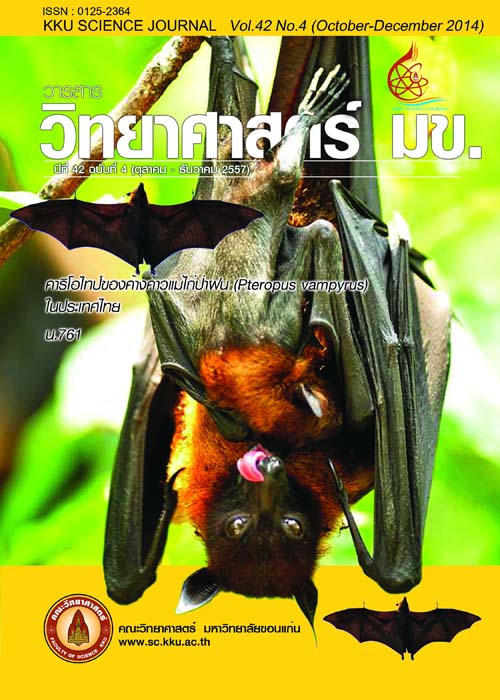อะซีโทจีนินจากพืชวงศ์น้อยหน่าและฤทธิ์ทางชีวภาพ
Main Article Content
บทคัดย่อ
อะซีโทจีนินเป็นสารพฤกษเคมีออกฤทธิ์ทางชีวภาพที่พบเฉพาะในพืชวงศ์น้อยหน่าเท่านั้น โครงสร้างทางเคมีประกอบด้วยวงแกมมาแลคโทนต์ออยู่ที่ปลายโซ่ไฮโดรคาร์บอน มีหมู่ไฮดรอกซิล อะซีทอกซิล คีโตน อีพอกไซด์ วงเตตระไฮโดรฟูแรน และ วงเตตระไฮโดรไพแรน รวมทั้งพันธะคู่และพันธะสามเกาะอยู่ภายในโซ่ จากการสืบค้นคําสําคัญ “acetogenin” ในฐานข้อมูล SciFinder ปี 2014 พบว่ามีรายงานผลการตีพิมพ์เกี่ยวกับการค้นพบ อนุพันธ์ของอะซีโทจีนินเป็นจํานวนมาก สารเหล่านี้สามารถแสดงคุณสมบัติทางชีวภาพได้อย่างกว้างขวาง ได้แก่ ฤทธิ์ต้านมะเร็ง ฤทธิ์ต้านมาลาเรีย ฤทธิ์ต้านเชื้อรา ฤทธิ์ต้านวัณโรค และ ฤทธิ์ต้านอนุมูลอิสระ รวมทั้งสามารถยับยั้งการส่งถ่ายอิล็กตรอนในไมโทคอนเดรียคอมเพล็กซ์ที่ 1 และมีฤทธิ์ฆ่าไรสีน้ำตาล ดังนั้นวัตถุประสงค์ของ
บทความปริทัศน์นี้เป็นการรวบรวมสารอะซีโทจีนินที่แยกได้ใหม่และฤทธิ์ทางชีวภาพที่มีการรายงานระหว่างปี 2005 ถึง 2014 จากการรวบรวมข้อมูลพบว่าสารอะซีโทจีนินจำนวนมากสามารถยับยั้งเซลล์มะเร็งได้อย่างมีนัยสําคัญ นอกจากนี้ยังพบว่าสาร asimitrin (62) 4-hydroxytrilobin (68) และ squamostanins A-D (78-81) สามารถยับยั้งเซลล์มะเร็งได้ดีกว่ายา adriamycin ที่ใช้รักษาโรคมะเร็งในปัจจุบัน ดังนั้นสารอะซีโทจีนินจึงเป็นหนึ่งในสารออกฤทธิ์จากธรรมชาติที่ควรนำมาพัฒนาเพื่อต่อยอดไปเป็นยารักษาโรคมะเร็ง ซึ่งเป็นประโยชน์ต่อวงการแพทย์เป็นอย่างมาก
Article Details

อนุญาตภายใต้เงื่อนไข Creative Commons Attribution-NonCommercial-NoDerivatives 4.0 International License.


